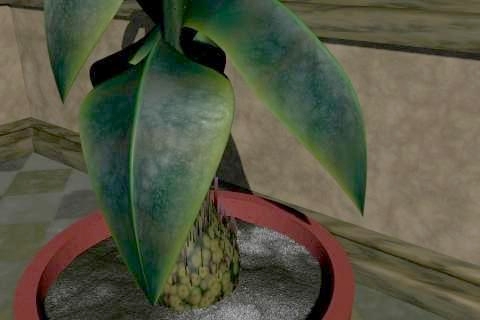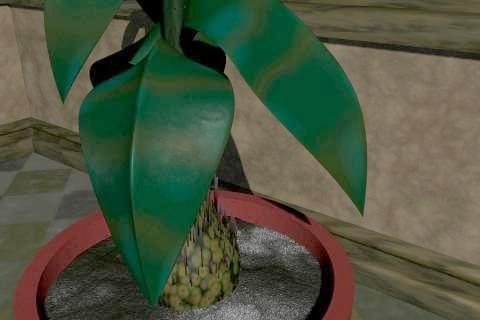|
Layer 1 Layer one is a simple green Blinn shading model, attached to the leaf. The geometry of the leaf consists of a deformed NURBS sphere. |
 |
|
Layer 2 Teal spots, created with a Worley float, are added to the second layer, a new Blinn layer. The Worley modifies this layer's opacity. |
 |
|
Layer 3 Subtle brown stripes, created with a Color Ramp, cross the leaf on layer number three. The Color Ramp modifies the opacity of the third Blinn layer. |
|
|
Layer 4 Louder stripes, created with another color ramp, run down the leaf. An ST manifold connected to the ramp and the S offset was adjusted to get the ramp to line up with the leaf edges. This ramp modifies the opacity of a fourth Blinn layer. |
 |
|
Back to Layer 1 Finally, a Turbulence
float is connected to the specular value,
Ks, of the first layer.
|
 |
| The call graph.
1) Base layer. 2) Spots. 3) Brown stripes. 4) Green stripes. a) This ST manifold feeds two float nodes. |
 |
| The Palette
This is the reason why the call graph is so mighty. |
 |
